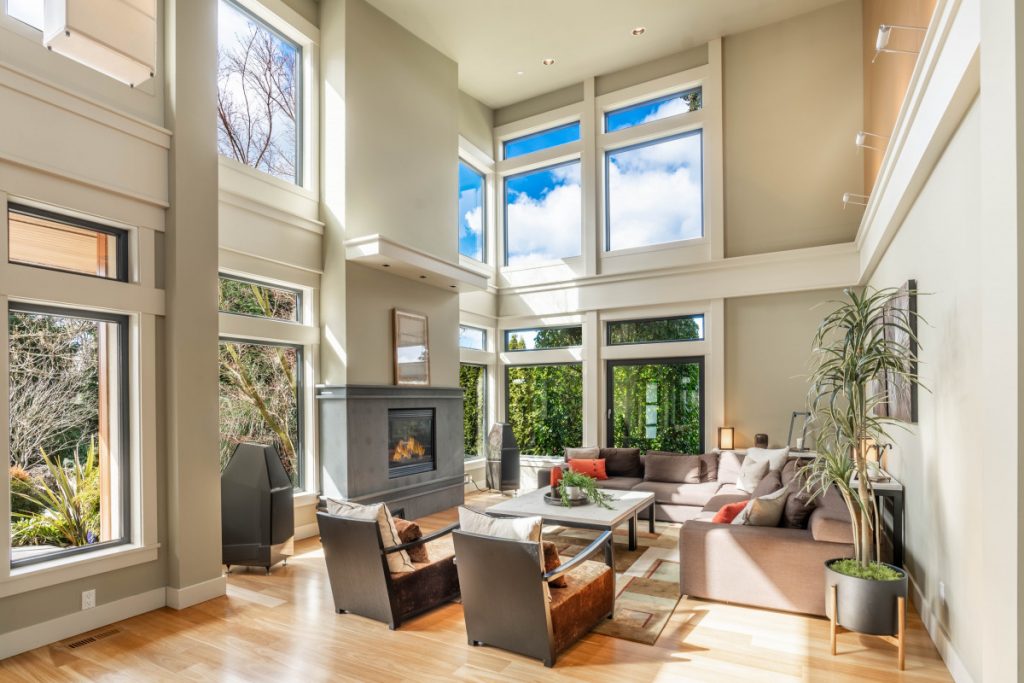The goal of sustainable architecture is to reduce energy consumption, carbon emissions, and waste during the building, operation, and maintenance of a house. When designing and building sustainable architecture, many key principles are used to achieve that goal. Based on architectural drawings and a sustainability assessment using computer modeling, an energy-efficiency star rating of 10 can be generated. The greater the rating, the less energy is required to heat and cool the home.

Key principles of sustainable architecture
Designing Passively
The sun, wind, and shade are all free natural resources that can be used to illuminate, heat, and cool spaces. The passive design makes use of these resources by working with the site’s unique conditions and climate.
Houses are purposefully oriented for sun and wind movement, and the building envelope (walls, floor, roof, and windows) is meticulously designed to control where and when the sun, breeze, and shade enter the house throughout the day and seasons. A house built with a good passive design can be thermally comfortable all year round, depending on its location and site.
Energy efficiency
Heating and cooling are the two largest energy consumers in a home. By reducing the need for heating and cooling, a home’s energy consumption and thus its ongoing carbon emissions can be reduced. Passive design principles serve as the foundation for creating such an energy-efficient home: high-quality materials, products, and construction ensure that it is well ventilated, insulated, and airtight.
Based on architectural drawings and a sustainability assessment using computer modeling, an energy-efficiency star rating of 10 can be generated. The greater the rating, the less energy is required to heat and cool the home.
Carbon footprint over the life cycle
The goal of sustainable architecture is to design buildings with a low or zero carbon footprint throughout their life cycle, from construction to operation and maintenance.
The emissions associated with operating a building, such as energy for heating, cooling, cooking, and domestic hot water, are referred to as operational carbon. A building must be carbon neutral in both embodied and operational carbon to achieve a carbon-neutral footprint.
Reductionism
Reductionism is one method of lowering a building’s carbon footprint. Every square metre of house has environmental and financial consequences; thus, the need for every space, material, and product is questioned and considered. Redundancies are eliminated in a reductionist approach to reduce a house’s carbon footprint, energy consumption, and cost. By building less but better, a house can be easier and less expensive to build and run, as well as energy efficient and carbon neutral as possible.
Waste and material impact
Every material used contributes significantly to a building’s embodied carbon footprint, as greenhouse gas emissions are produced during the manufacturing, transportation, and installation of that material. There is also waste from the use and installation of new materials, as well as waste from demolition and renovation.
Sustainable architecture reduces the environmental impact and waste of materials by prioritizing recycled and recyclable materials, minimizing demolition, construction, and unnecessary material consumption, using locally sourced materials, and incorporating construction techniques that make a building easier to adapt, reuse, and eventually demolish.
Local environment
The overarching principle of sustainable architecture is respect for the environment. Sustainable houses have a low environmental impact and contribute to the local environment.
Affordability and budgeting
A sustainable house does not have to be expensive (although there is lots of valuable technology that presents an upfront investment). Prioritizing sustainability in the budget will result in a better, more economical, and energy efficient home that will save you more money over time.
